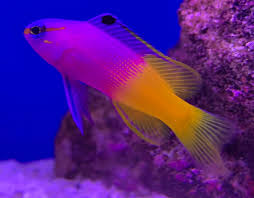The Dragon and the Evolution of Chinese Calligraphy

Chinese calligraphy is an art form deeply intertwined with the history, philosophy, and culture of China. It is not merely the act of writing; it is a visual art that conveys the character, emotions, and spirit of the writer. Through brushstrokes on paper, calligraphy becomes a means of self-expression, a method of preserving history, and an embodiment of beauty and discipline. Among the many symbols that have emerged within the tradition of Chinese calligraphy, the dragon stands out as one of the most powerful and culturally significant motifs. The dragon’s influence on Chinese calligraphy has evolved over the centuries, reflecting its changing roles in society, its symbolic importance, and its representation in the written word.
In this article, we will explore how the dragon has shaped Chinese calligraphy, examining its historical development, symbolism, and artistic representations, as well as its role in shaping the evolution of this revered art form.
The Dragon in Chinese Culture: Symbolism and Significance
Before we delve into the specific influence of the dragon on Chinese calligraphy, it is important to first understand the deep cultural and symbolic significance of the dragon in Chinese tradition. Unlike the fearsome dragons of Western mythology, the Chinese dragon is a benevolent and auspicious creature, revered for its power, wisdom, and connection to the natural elements, particularly water and rain. It symbolizes strength, good fortune, and divine protection.
The dragon’s symbolic role in Chinese culture can be traced back thousands of years, with depictions of dragons appearing in early Chinese artifacts and art. It was believed that the dragon had control over the forces of nature, particularly the elements of water, which were vital for agriculture in ancient China. This association with water made the dragon an important symbol of prosperity and abundance.
In Chinese mythology, the dragon is also closely tied to the imperial family, with the emperor often referred to as the “Son of Heaven” and the dragon serving as a symbol of his divine right to rule. The dragon was not only a symbol of imperial power but also of unity, as it represented the harmony between heaven, earth, and mankind.
The Dragon in Early Chinese Calligraphy
Chinese calligraphy has a long and storied history that dates back to the Shang Dynasty (1600–1046 BCE), when the earliest known forms of Chinese writing, known as oracle bone script, were developed. These early forms of writing were primarily used for divination and record-keeping, with inscriptions often carved into bones or turtle shells. While the dragon was not commonly depicted in these early inscriptions, its presence in Chinese culture as a symbol of power and nature was beginning to take root.
As Chinese calligraphy evolved over the centuries, particularly during the Zhou Dynasty (1046–256 BCE), the representation of dragons became more prominent in the art form. Calligraphers began to incorporate more stylized representations of the dragon in their brushwork, reflecting the growing importance of the dragon as a symbol of imperial authority and the forces of nature.
During this period, the seal script, a form of writing used for official seals, became popular. This script was more ornate and artistic compared to the earlier forms of writing, and it provided an opportunity for calligraphers to experiment with the visual aspects of writing. The dragon, as a symbol of imperial power, was often used in the design of seals and inscriptions, and its intricate, serpentine form began to influence the brushwork and style of calligraphers.
The Dragon and the Development of Regular Script (Kaishu)
The regular script (kaishu), one of the most important and enduring styles of Chinese calligraphy, emerged during the Han Dynasty (206 BCE–220 CE). This style of writing was characterized by its clear, easy-to-read structure and became the standard form for writing in China. During this period, the dragon’s influence on calligraphy grew even stronger.
As the dragon continued to symbolize the emperor’s divine right to rule, it also came to represent the strength and authority of the state. Calligraphy in the regular script began to reflect these qualities, with the brushstrokes becoming more confident, bold, and assertive. The dragon’s presence in the written word symbolized the powerful force of the emperor and the stability of the empire.
Many calligraphers of the Han Dynasty, such as Wang Xizhi, sought to infuse their brushwork with the same fluidity and power that the dragon symbolized. The dragon’s sinuous, dynamic lines became an ideal for calligraphers to emulate, as they sought to create brushstrokes that conveyed both energy and grace. This period also saw the rise of clerk script (lishu), a more standardized form of writing that was used in official documents. The smooth, flowing brushstrokes of the regular script and clerk script reflected the influence of the dragon’s form and movement.
The Dragon in the Tang Dynasty: A Time of Artistic Flourishing
The Tang Dynasty (618–907 CE) was a period of great artistic flourishing in China, and it marked a golden age for Chinese calligraphy. During this time, calligraphers reached new heights of creativity, experimenting with different styles and techniques. The dragon, as a symbol of imperial power and divine protection, continued to inspire calligraphers, and its representation became more intricate and stylized.
One of the most notable calligraphers of the Tang Dynasty was Yan Zhenqing, whose works are considered masterpieces of Chinese calligraphy. Yan’s brushstrokes were powerful, expressive, and full of vitality, much like the dragon itself. His work exemplified the strength and fluidity that the dragon symbolized, and his style influenced generations of calligraphers to come.
In addition to Yan Zhenqing, another prominent calligrapher from this period was Ou Yangxun, who is known for his contributions to the development of the running script (caoshu). The running script, with its more fluid and free-flowing strokes, was particularly well-suited to depicting the dynamic, serpentine form of the dragon. The dragon’s twisting, undulating lines served as a model for the curving brushstrokes in the running script, allowing calligraphers to capture the dragon’s energy and movement on the page.
The Dragon and the Evolution of Cursive Script
The cursive script (caoshu), known for its free-flowing, rapid strokes, emerged as a form of artistic expression during the Tang and Song Dynasties. In this script, calligraphers aimed to convey the spontaneity and vitality of the dragon through quick, expressive brushstrokes. The dragon’s form, with its sinuous curves and dynamic lines, provided a natural template for the fluidity and energy of cursive script.
The cursive script was a departure from the more controlled, structured forms of calligraphy like the regular and running scripts. It allowed for greater freedom and creativity, and calligraphers began to experiment with abstract representations of the dragon’s form, capturing its essence rather than its literal shape. The influence of the dragon in cursive script can be seen in the sweeping, curved lines that characterize this style of writing.
Calligraphers such as Zhao Mengfu and Wu Cheng’en were known for their innovative use of cursive script, and their works often included representations of dragons in an abstract, stylized form. The dragon’s essence was captured in the fluidity of the brushwork, with its presence felt in the overall energy and rhythm of the calligraphy.
The Dragon in Modern Chinese Calligraphy
In the modern era, the influence of the dragon continues to be felt in Chinese calligraphy. While contemporary calligraphers may no longer write in the same traditional styles as their ancient predecessors, the symbolism of the dragon remains a powerful force in the art form. Modern calligraphers continue to experiment with the dragon’s dynamic lines and powerful symbolism, incorporating it into their works in new and innovative ways.
The dragon’s role in Chinese calligraphy has evolved to reflect the changing cultural and political landscape of China. During times of political upheaval or social change, the dragon has remained a symbol of hope, strength, and perseverance. In contemporary calligraphy, the dragon is often used to convey a sense of national pride and identity, particularly in works that celebrate Chinese heritage and culture.
Conclusion
The dragon has played an integral role in the evolution of Chinese calligraphy, serving as a symbol of power, grace, and vitality. From the earliest inscriptions of the Shang Dynasty to the flowing brushstrokes of modern calligraphers, the dragon has inspired calligraphers to create works that convey both the strength and the elegance of this mythical creature. Through its influence on various calligraphic styles, such as the regular script, running script, and cursive script, the dragon has shaped the development of Chinese calligraphy and continues to be a vital source of inspiration for artists today.
As a cultural symbol, the dragon in Chinese calligraphy embodies the harmony between strength and beauty, power and grace. It reminds us of the interconnectedness of art, culture, and tradition, and the enduring influence of mythical creatures in shaping the visual language of a civilization. The dragon will undoubtedly continue to inspire generations of calligraphers, ensuring its place as one of the most enduring and revered symbols in Chinese culture.

